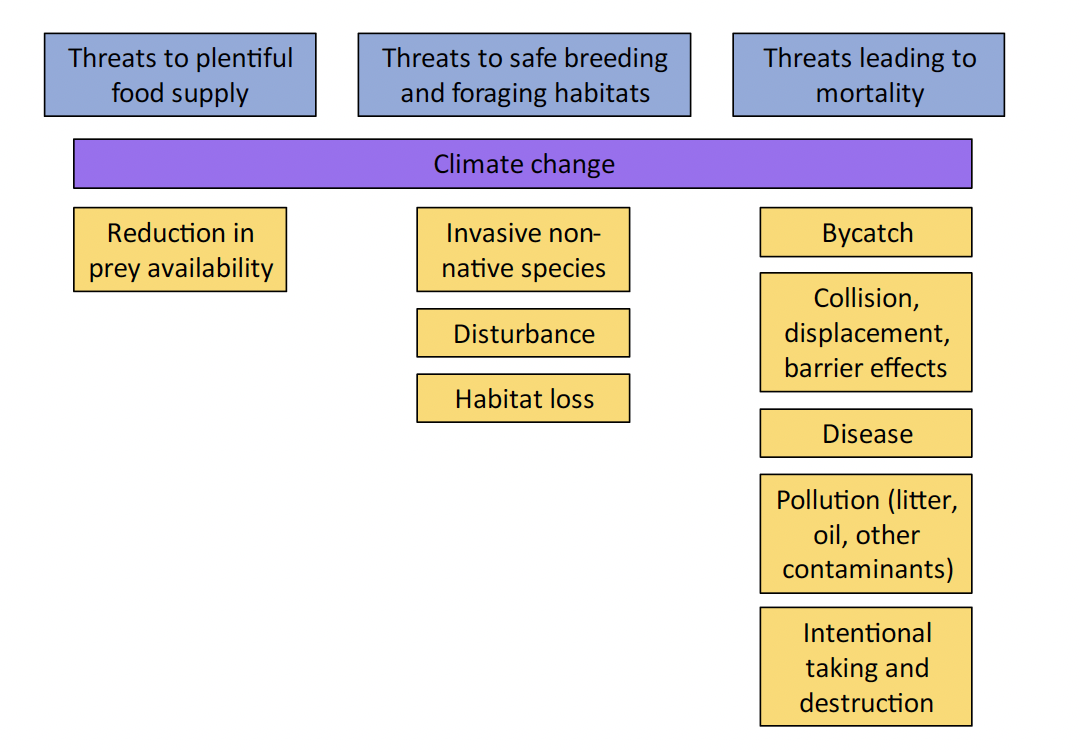Scottish seabird conservation action plan: vulnerability report
Details the process undertaken to determine the key pressures acting on seabirds whilst at Scottish seas and at breeding colonies and used to inform the development of the Scottish seabird conservation action plan.
Vulnerability Assessment Results
Tables A3.1 to A3.11 give a summary of the scores for sensitivity, exposure and the resultant vulnerability, along with confidence, for each species with respect to each of the impacts/threats from pressures.
Tables A3.12 to A3.23 lists those species that are most vulnerable to each of the impacts/threats (i.e. with a vulnerability score of medium or high from Tables A3.1 to A3.11).
The resulting pressures with a medium and high vulnerability were further rationalised to assist with focusing actions on a specific activity associated with multiple pressures (i.e. collision, displacement and barrier effect pressures for marine energy where combined) or where distinct actions to address a specific pressure can be pragmatically separately out (i.e. separating ‘habitat loss’ from ‘invasive predatory mammals’).
The results from the vulnerability assessments indicated that the main pressures and threats acting on seabirds whilst at Scottish breeding colonies and in Scottish waters are:
- Climate change
- Reduction in prey availability
- Invasive predatory species
- Bycatch
- Collision, displacement and barrier effects
- Disturbance
- Pollution (marine litter and contaminants)
- Habitat loss
- Intentional taking/ destruction of adults/ eggs (control & harvesting activities)
These pressures act on seabirds in one of three main pathways; threats to plentiful food supplies; availability of safe breeding and foraging habitats; and threats leading to direct mortality. Climate change is the exception, as this can act on all three pathways.

Figure 4: Diagram showing the three pathways that pressures and threats can be grouped under depending on the type of threat they pose. These pathways are threats to plentiful food supply; threats to safe breeding and foraging habitats; and threats leading to mortality. Each of the pressures is grouped under one of these threats, with the exception of climate change which falls under all three.
Contact
Email: marine_species@gov.scot
There is a problem
Thanks for your feedback